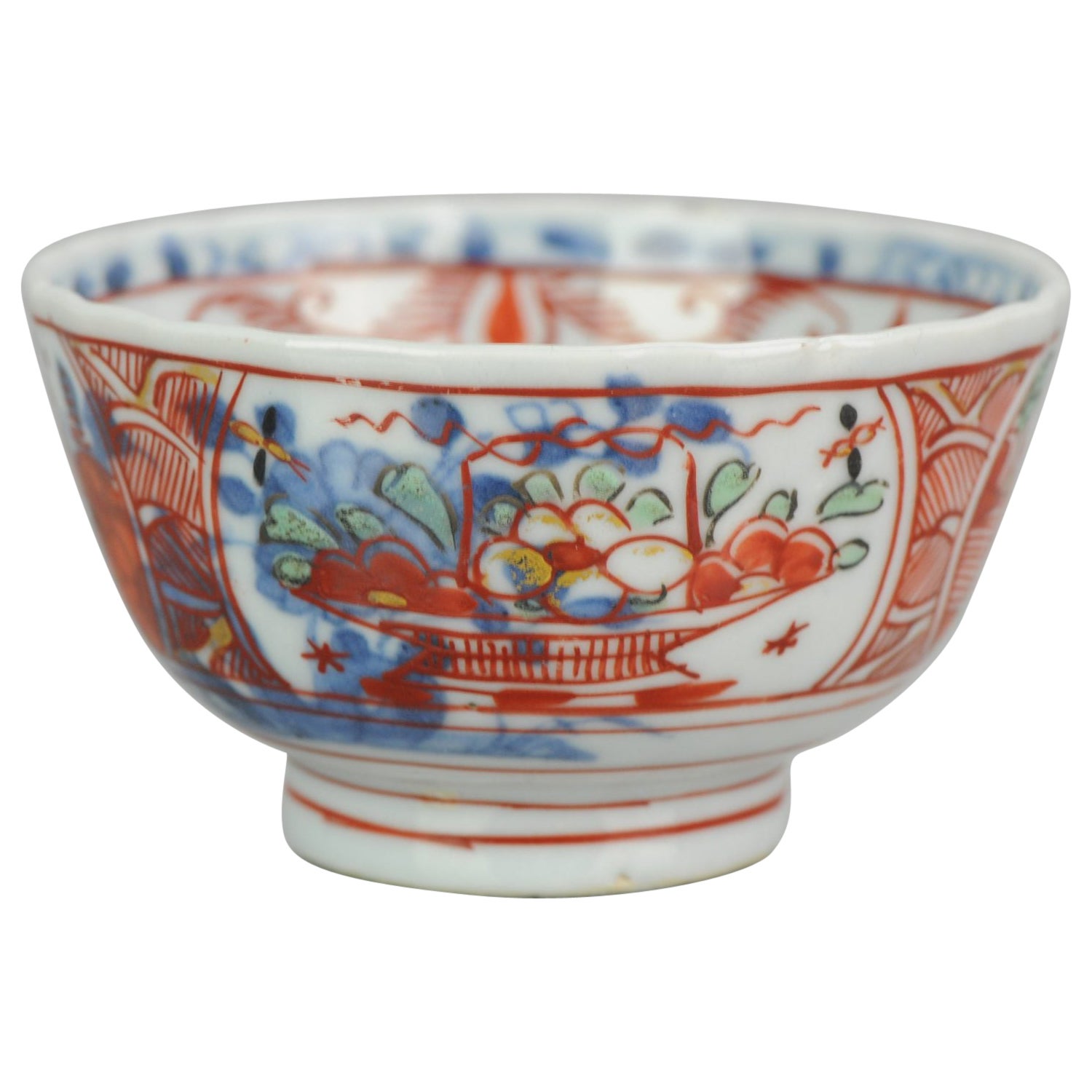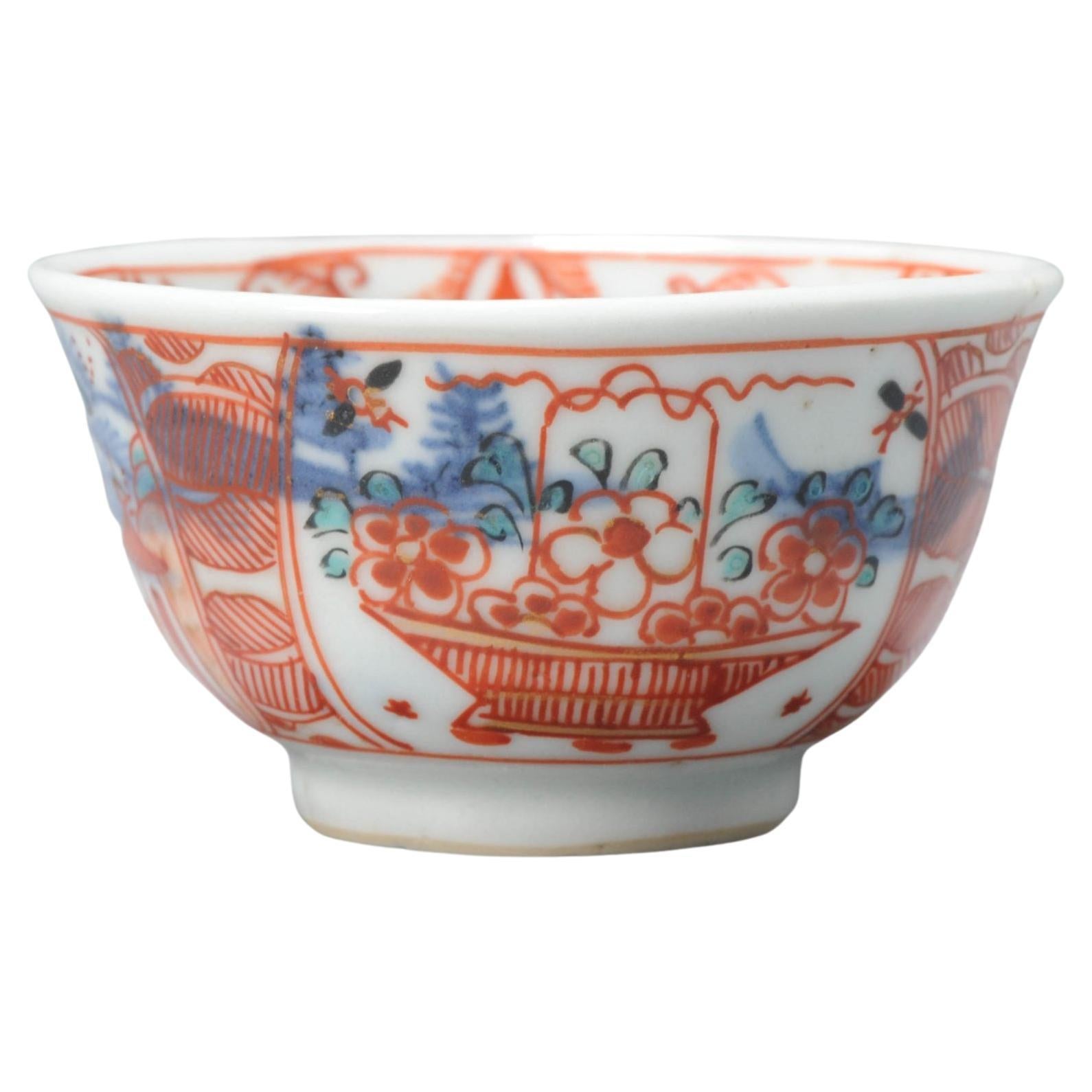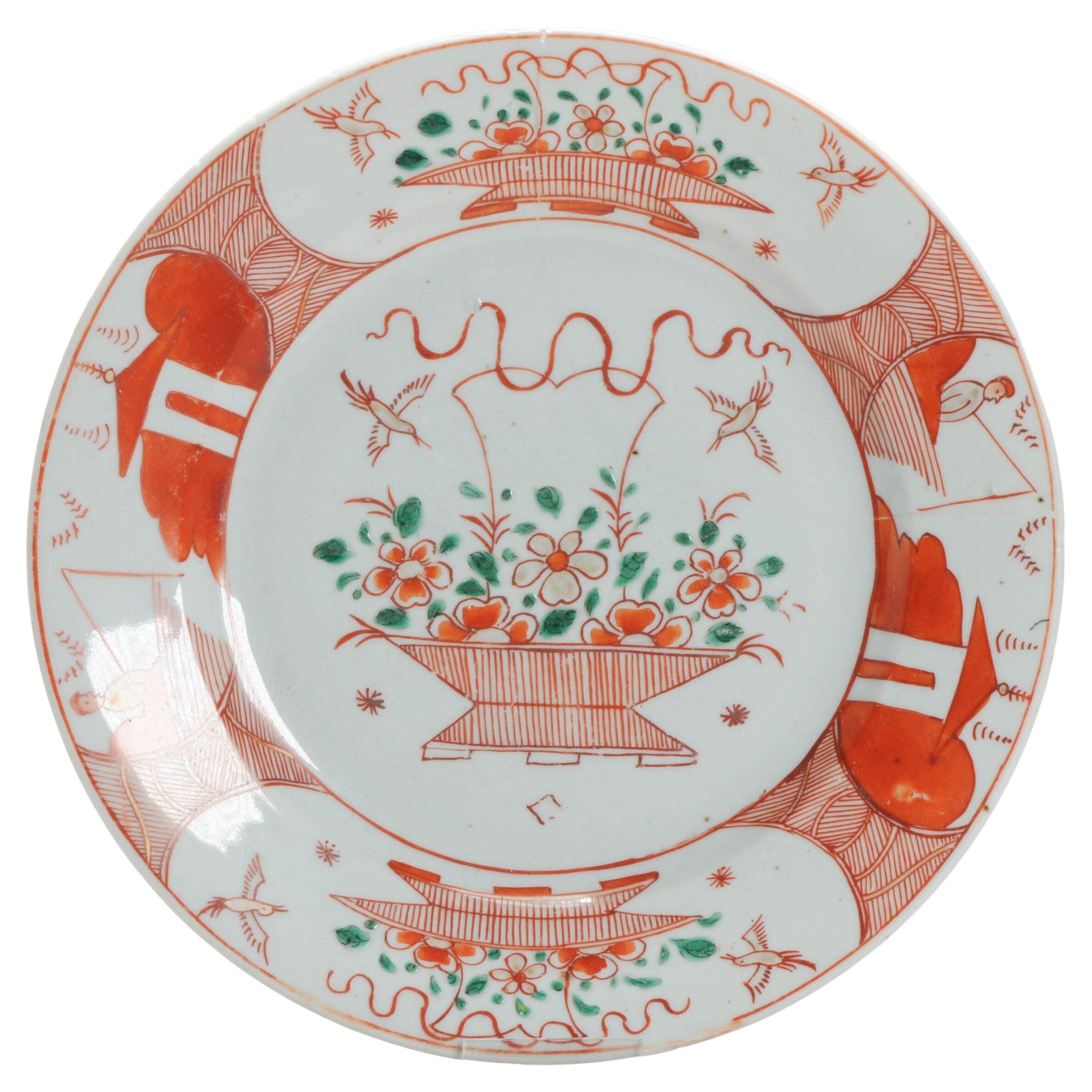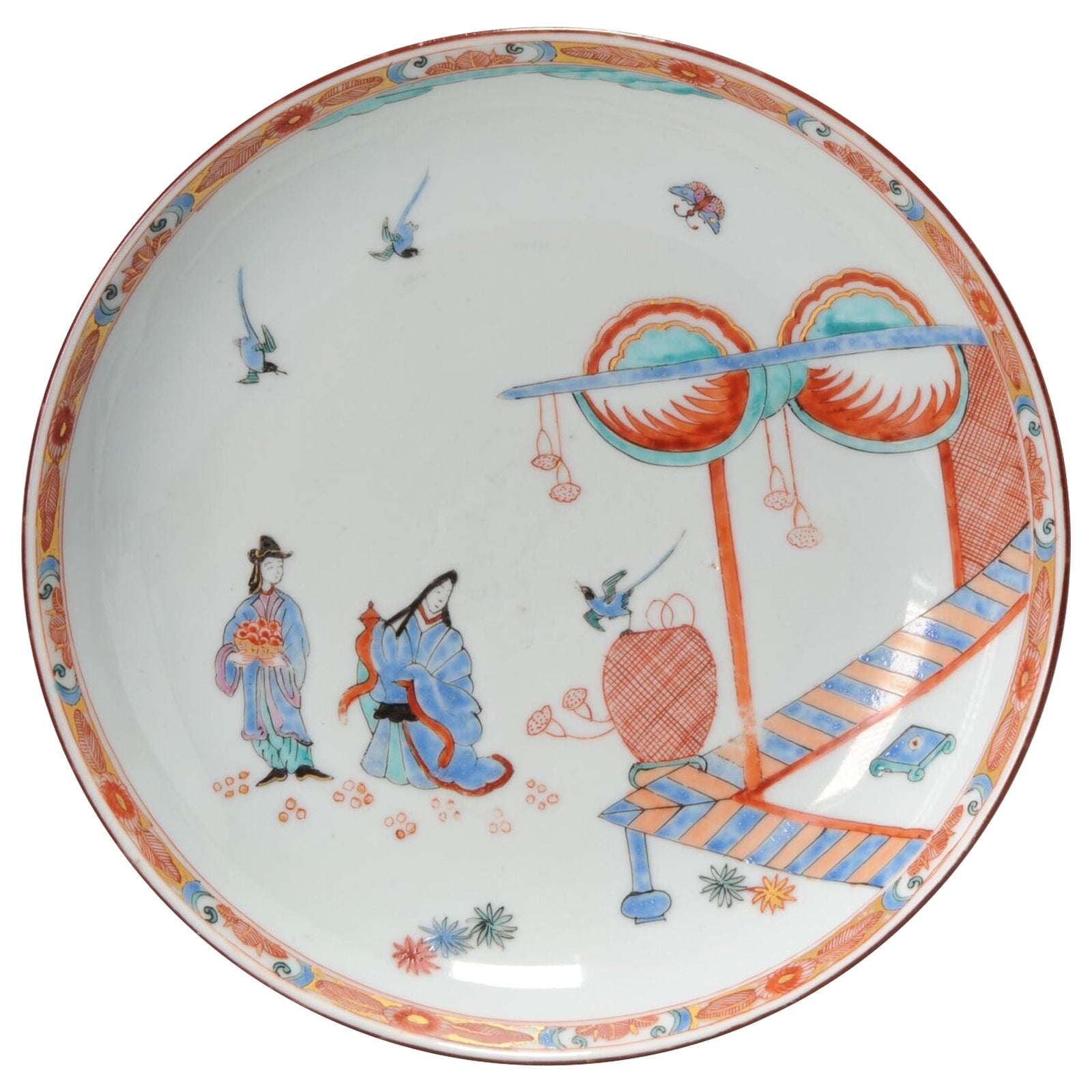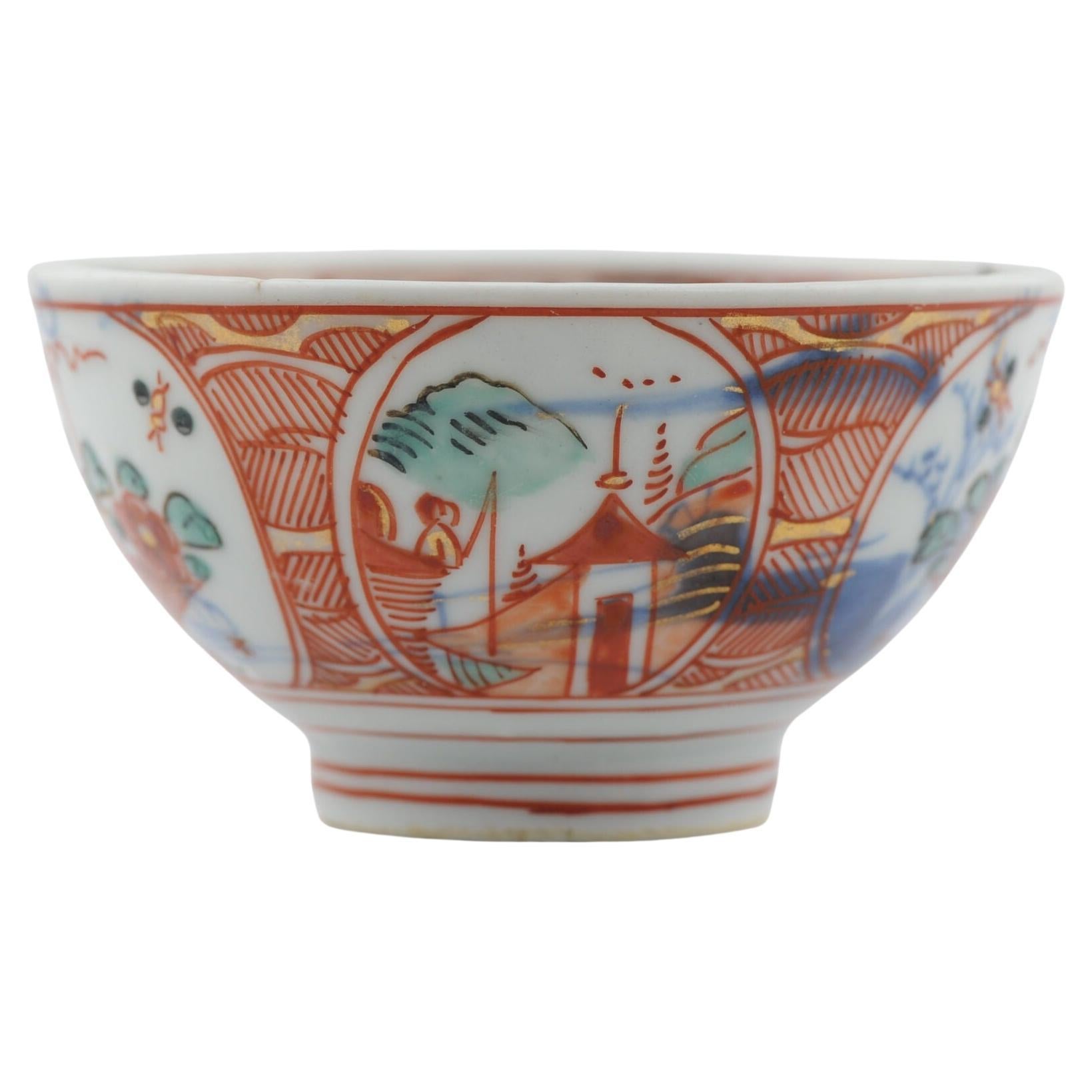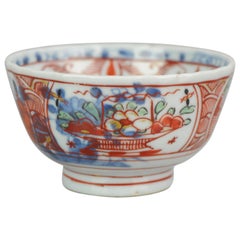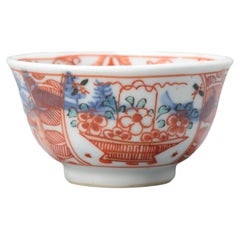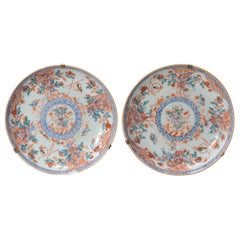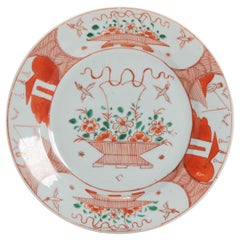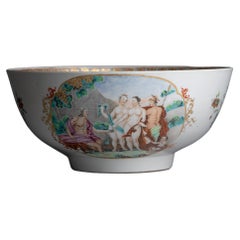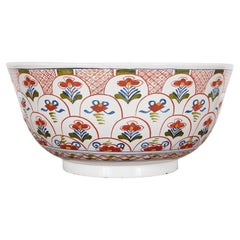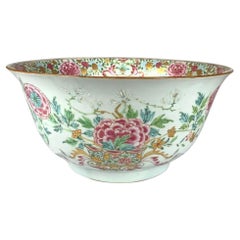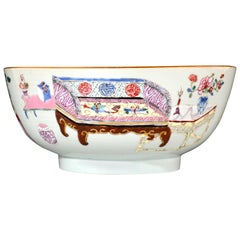Items Similar to Antique Amsterdam Bont Porcelain Bowl Chinese Polychrome Landscape, 17-18th Cen
Want more images or videos?
Request additional images or videos from the seller
1 of 5
Antique Amsterdam Bont Porcelain Bowl Chinese Polychrome Landscape, 17-18th Cen
About the Item
A very nicely made 18th century Kangxi Amsterdam Bont porcelain bowl.
We take a look at Amsterdams Bont porcelain from China. A relatively unknown niche of Chinese porcelain from ca 1680-1740 that was partly decorated in Europe. Because mainstream Chinese collectors have yet to discover the historical significance of these wares they are relatively easy to find in Holland. While also being highly interesting and of often super quality and with an amazing array of decorations. Amsterdams Bont is a name given to porcelain partly decorated in the Netherlands (most likely in cities like Delft, Haarlem, Makkum). Because Amsterdam was at this moment in time the trade centre of the western world and also of the porcelain trade a lot of this over enamelling was probably commissioned by Amsterdam merchants, to reap higher profits on otherwise boring Chinese wares. The name Amsterdam Bont probably derives from the fact that these type of decorated ware was sold by Amsterdam Merchants. Amsterdam Bont consists of either blanc or under glaze blue decorated Chinese porcelain of basic quality, that was later enhanced with red and sometimes other colours in the Netherlands. It must not be mistaken for other type of Chinese & Japanese blanc wares decorated in Europe. Those we simply call European Decorated Chinese porcelain. Amsterdam Bont really is easily recognisable by its colour and style. An interesting side note is that a similar process of overdecorating with red was done in London in more or less the same colours.
Method of manufacturing.
This enhancemend was done on “petit feux” or small fire at a lower temperature. This technique of baking enamels on a lower temperature that was perfected in the Delft around 1670-1680 to compete with the colourfull Japanese porcelain of the time. At the turn of the 17th c Chinese porcelain was cheaper than its Japanese counterpart and by overglazing Chinese porcelain with red it was easy for the Dutch to create a `Imari` feel on the Chinese wares. Catering to the huge craving for imari coloured porcelain in the West at the time. At that time blue _ white porcelain was relatively well known as was blue and white delftware. It was the addition of different colours that sparked huge interest. Everybody wanted porcelain with red in it, and that was what the merchants were giving their customers with this Amsterdam Bont decorations. One must imagine that sometimes a VOC ship brought home hundreds of thousands of pieces of porcelain, often with 1000’s of pieces decorated in the same way (See for example the Geldermalsen or “Nanking” Cargo) . So a simple blue and white bowl could easily be increased in value by enhancing its looks.
Additional information:
Material: Porcelain & Pottery
Type: Bowls
Region of Origin: China
Emperor: Qianlong (1735-1796)
Period: 18th century Qing (1661 - 1912)
Age: Pre-1800
Condition: 3 lines from rim, 1 of them is dirty. Small chip to rim.
Dimension: Ø 15 x 7 H cm
- Dimensions:Height: 2.76 in (7 cm)Diameter: 5.91 in (15 cm)
- Materials and Techniques:
- Place of Origin:
- Period:
- Date of Manufacture:18th Century
- Condition:3 lines from rim, 1 of them is dirty. Small chip to rim.
- Seller Location:Amsterdam, NL
- Reference Number:Seller: 1344786595951stDibs: LU4863236024362
About the Seller
5.0
Platinum Seller
Premium sellers with a 4.7+ rating and 24-hour response times
Established in 2015
1stDibs seller since 2019
236 sales on 1stDibs
Typical response time: 1 hour
- ShippingRetrieving quote...Shipping from: Amsterdam, Netherlands
- Return Policy
Authenticity Guarantee
In the unlikely event there’s an issue with an item’s authenticity, contact us within 1 year for a full refund. DetailsMoney-Back Guarantee
If your item is not as described, is damaged in transit, or does not arrive, contact us within 7 days for a full refund. Details24-Hour Cancellation
You have a 24-hour grace period in which to reconsider your purchase, with no questions asked.Vetted Professional Sellers
Our world-class sellers must adhere to strict standards for service and quality, maintaining the integrity of our listings.Price-Match Guarantee
If you find that a seller listed the same item for a lower price elsewhere, we’ll match it.Trusted Global Delivery
Our best-in-class carrier network provides specialized shipping options worldwide, including custom delivery.More From This Seller
View AllAntique Imari Qing Dynasty Chinese Porcelain Amsterdams Bont Bowl, 18th Cen
Located in Amsterdam, Noord Holland
A very nicely decorated bowl. Dating to around 1740.
Additional information:
Material: Porcelain & Pottery
Type: Plates, Tea Drinking
Region of Origin: China
Period: 18th century Qi...
Category
Antique 18th Century Chinese Decorative Bowls
Materials
Porcelain
$398 Sale Price
20% Off
Antique Amsterdam Bont Porcelain Tea Bowl Chinese Polychrome, 18th Century
Located in Amsterdam, Noord Holland
A very nicely made 18th century Qianlong Amsterdam Bont porcelain bowl with a fantastic underglaze blue scene of a landscape
Take a look at Amsterdams Bont porcelain from China. A relatively unknown niche of Chinese porcelain from ca 1680-1740 that was partly decorated in Europe. Because mainstream Chinese collectors have yet to discover the historical significance of these wares they are relatively easy to find in Holland. While also being highly interesting and of often super quality and with an amazing array of decorations. Amsterdams Bont is a name given to porcelain partly decorated in the Netherlands (most likely in cities like Delft, Haarlem, Makkum). Because Amsterdam was at this moment in time the trade centre of the western world and also of the porcelain trade a lot of this over enamelling was probably commissioned by Amsterdam merchants, to reap higher profits on otherwise boring Chinese wares. The name Amsterdam Bont probably derives from the fact that these type of decorated ware was sold by Amsterdam Merchants. Amsterdam Bont consists of either blanc or under glaze blue decorated Chinese porcelain of basic quality, that was later enhanced with red and sometimes other colours in the Netherlands. It must not be mistaken for other type of Chinese & Japanese blanc wares decorated in Europe. Those we simply call European Decorated Chinese porcelain...
Category
Antique 18th Century Chinese Decorative Bowls
Materials
Porcelain
$310 Sale Price
20% Off
Antique Amsterdam Bont Porcelain Plates Chinese Polychrome Parrots, 18th Century
Located in Amsterdam, Noord Holland
A very nicely made pair of two 18th century Amsterdam Bont porcelain dishes. Most probably Qianlong period blue and white dishes with Amsterdam bont over-decoration of flowers, quails and parrrots. Truly museum pieces.
We take a look at Amsterdams Bont porcelain from China. A relatively unknown niche of Chinese porcelain from ca 1680-1740 that was partly decorated in Europe. Because mainstream Chinese collectors have yet to discover the historical significance of these wares they are relatively easy to find in Holland. While also being highly interesting and of often super quality and with an amazing array of decorations. Amsterdams Bont is a name given to porcelain partly decorated in the Netherlands (most likely in cities like Delft, Haarlem, Makkum). Because Amsterdam was at this moment in time the trade centre of the western world and also of the porcelain trade a lot of this over enamelling was probably commissioned by Amsterdam merchants, to reap higher profits on otherwise boring Chinese wares. The name Amsterdam Bont probably derives from the fact that these type of decorated ware was sold by Amsterdam Merchants. Amsterdam Bont consists of either blanc or under glaze blue decorated Chinese porcelain of basic quality, that was later enhanced with red and sometimes other colours in the Netherlands. It must not be mistaken for other type of Chinese & Japanese blanc wares decorated in Europe. Those we simply call European Decorated Chinese porcelain. Amsterdam Bont really is easily recognisable by its colour and style. An interesting side note is that a similar process of overdecorating with red was done in London in more or less the same colours.
Method of manufacturing.
This enhancemend was done on “petit feux” or small fire at a lower temperature. This technique of baking enamels on a lower temperature that was perfected in the Delft around 1670-1680 to compete with the colourfull Japanese porcelain of the time. At the turn of the 17th c Chinese porcelain...
Category
Antique 18th Century Chinese Decorative Dishes and Vide-Poche
Materials
Porcelain
$1,255 Sale Price / set
20% Off
Antique Chinese Porcelain Amsterdam Bont Decorated Plate, 18th Century
Located in Amsterdam, Noord Holland
A very nicely decorated plate. Decorated in Holland on A Chinese blank porcelain plate. Circa 1750-1770
Additional information:
Material: Porcelain & ...
Category
Antique 18th Century Chinese Qing Decorative Dishes and Vide-Poche
Materials
Porcelain
Antique Chinese Porcelain Kakiemon Dishe Amsterdam Bont Qing Nightingale, 18th C
Located in Amsterdam, Noord Holland
Unusual Dutch Decorated Kakiemon Style deep dish. The dish itself is a white porcelain plate from the Kangxi period, ca 1700-1720. The painting is Dutch Enamelling from ca 1710-1725. Visisble is a scene in what seems to be a garden of a pagode house depicting a Lady with a Man listening to a Nightingales singing, with a Bird Cage nearby. It's a well known example of the original version of a pattern which is used at the Bows and Chelsea factories in England in the 1750's where it is know as the 'Lady' and 'Old lady pattern' and which was also copied on oriental porcelain in Holland around 1720.
The piece is unmarked.
References / Robert McPherson Oriental ceramics writes
For an octagonal Kakiemon beaker and saucer of this design from The Burghley House Collection see : Porcelain for Palaces, The Fashion for Japan in Europe 1650 - 1750 (Various authors, The Oriental Ceramic Society,1990. ISBN 0-903421-24-0) page 155, plate 127, for a Chelsea example of this Kakiemon pattern see 328 and for the Bow porcelain version see 327. Helen Espir illustrates the Burghley example mentioned above two illustrated it`s connection with two Dutch decorated blanc de chine beakers and a Japanese saucer...
Category
Antique 18th Century Chinese Decorative Dishes and Vide-Poche
Materials
Porcelain
$3,048 Sale Price
20% Off
Antique Kangxi Amsterdam Bont Porcelain Bowl Chinese Polychrome Landscape
Located in Amsterdam, Noord Holland
A very nicely made 18th century Kangxi Amsterdam Bont porcelain bowl.
A very nicely made 18th century Kangxi Amsterdam Bont porcelain bowl.
We take a look at Amsterdams Bont porcelain from China. A relatively unknown niche of Chinese porcelain from ca 1680-1740 that was partly decorated in Europe. Because mainstream Chinese collectors have yet to discover the historical significance of these wares they are relatively easy to find in Holland. While also being highly interesting and of often super quality and with an amazing array of decorations. Amsterdams Bont is a name given to porcelain partly decorated in the Netherlands (most likely in cities like Delft, Haarlem, Makkum). Because Amsterdam was at this moment in time the trade centre of the western world and also of the porcelain trade a lot of this over enamelling was probably commissioned by Amsterdam merchants, to reap higher profits on otherwise boring Chinese wares. The name Amsterdam Bont probably derives from the fact that these type of decorated ware was sold by Amsterdam Merchants. Amsterdam Bont consists of either blanc or under glaze blue decorated Chinese porcelain of basic quality, that was later enhanced with red and sometimes other colours in the Netherlands. It must not be mistaken for other type of Chinese & Japanese blanc wares decorated in Europe. Those we simply call European Decorated Chinese porcelain...
Category
Antique 18th Century Chinese Qing Serving Bowls
Materials
Porcelain
You May Also Like
18th Century Chinese Export Porcelain Punch Bowl
Located in Fort Lauderdale, FL
A mid-18th century Chinese export porcelain punch bowl, hand-painted with "The Judgement of Paris" after Rubens.
European ceramicists borrowed motifs from Chinese porcelains through...
Category
Antique 1760s Chinese Chinese Export Decorative Bowls
Materials
Porcelain
18th c. English Delft Polychrome Punch Bowl
Located in Greenwich, CT
A deep delft punch bowl with polychrome decoration in reds, yellows and blues on a white ground with extensive exterior coverage depicting flowers in overlapping rounded tiles with a...
Category
Antique 1770s English Decorative Bowls
Materials
Delft
Large Antique Chinese Export Porcelain Bowl 18th Century Famille Rose C-1770
Located in Katonah, NY
This exquisite porcelain bowl, hand-painted in the Qianlong era, circa 1770, is decorated with colored enamels in the Famille Rose palette.
We see pink peonies in full bloom in flowe...
Category
Antique 1770s Chinese Chinese Export Decorative Bowls
Materials
Porcelain
18th Century Chinese Export Porcelain Bowl with Chinese Domestic Furniture
Located in Downingtown, PA
Chinese Export Famille Rose porcelain bowl with Chinese "Antiques" & Scholar's items on Furniture,
Qianlong Period,
circa 1735-1740.
The Chinese Export porcelain bowl is finely painted inside and out with famille rose enamels. On the front is a depiction of an unusual grouping of Chinese domestic...
Category
Antique 1730s Chinese Chinese Export Porcelain
Materials
Porcelain
Chinese Soups Bowl, 18th Century
Located in Aalsgaarde, DK
Chinese soups bowl, 18th century.
Category
Antique 18th Century Decorative Bowls
Materials
Glass
$924 / set
Porcelain Bowl, Compagnie des Indes, France (mount) - China, 18th/19th Century
Located in PARIS, FR
China 18th Century (bowl) – France 19th Century (mount)
Beautiful enameled porcelain bowl in the pink-purple tones characteristic of the “Famille Rose” with polychrome decoration o...
Category
Antique 19th Century French Chinese Export Decorative Bowls
Materials
Bronze
Recently Viewed
View AllMore Ways To Browse
Blue And White Bowls
European Decorated Chinese Porcelain
Antique Dutch Porcelain
Red Bowl Antique
18th Century Chinese Porcelain Bowl
Chinese Porcelain Small Bowl
Baked Enamel
Dutch Antique Bowl
Dutch Polychrome
Delft China
Red Delft
Amsterdam Pottery
Antique Delft China
Antique Dutch Delftware
Delft Blue China
Delft Holland Pottery Blue And White
Japanese Blue White Bowl
Bowl Made In Holland
